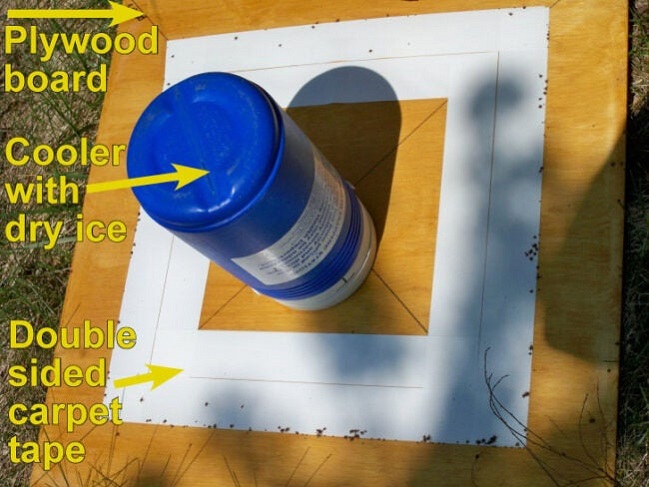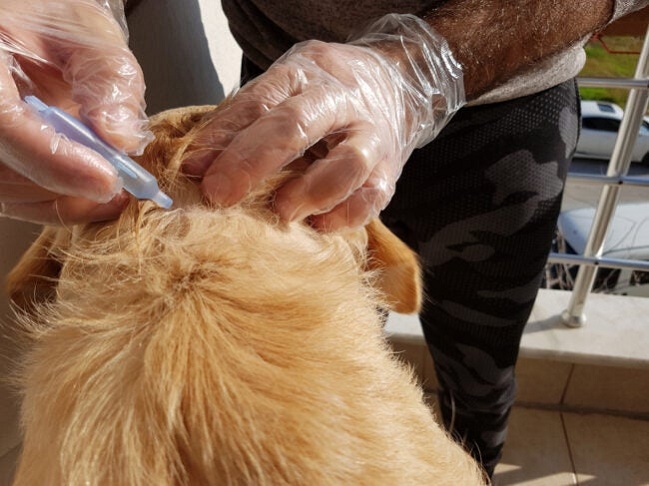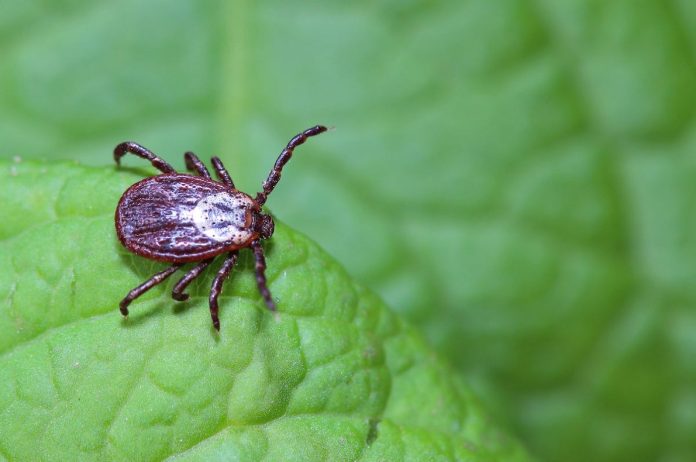Ticks can be a nuisance and pose health risks, but there are steps you can take to reduce your exposure and prevent infestations. Whether you find ticks in your house or in your yard, it’s important to have a game plan. Here’s what you need to know:
Q: Yesterday I spotted a tick on my bathroom floor, and last week I found one on my clothing. Is it possible that I have an infestation of ticks in my house? Or maybe in my yard? I know tick bites are related to Lyme disease, so I’m eager to find out how to get rid of ticks and the best way to keep them out of my home.
A: One tick in the house is one too many. While it’s unlikely that you have an infestation of ticks in the house, there’s a good chance that you’ve got some living nearby outdoors.
Of the 90 species of ticks that exist in the United States, only a handful carry diseases; the Centers for Disease Control and Prevention (CDC) provides online maps that show the geographical distribution of the various disease-carrying ticks so you can see which ticks are a health threat in your area.
Because these pests can carry Lyme disease—a tick-borne disorder that has seen a recent surge in the Northwest—among other diseases, it’s always a good idea to protect your family and your pets when you know that ticks are in season, and in the vicinity.
To find out what to do when you find a tick—inside or out—keep reading. We’ll let you know how to reduce your risk of exposure and how to treat your house and yard to ensure that ticks won’t set up shop.
If you find ticks in the house, don’t step on them—flush them
A tick’s body is very hard and, despite your best efforts, could survive a stomping. A better option is to pick the bug up with a piece of toilet paper and flush it down the commode. This is also the best way to get rid of ticks that are crawling on your body. If you find one biting you, however, use a pair of tweezers to grab it and pull it off, then flush it.
Keep in mind that tick infestations are rare indoors

Ticks thrive in moist and humid conditions where the humidity is 90 percent or higher, and most cannot survive in a climate-controlled house for more than a few days. Indoors, they simply desiccate (dry out) and die. Merely being inside can dramatically shorten a tick lifespan. In fact, the University of Rhode Island’s Tick Encounter Resource Center (TERC) reports the results of a study in which immature deer ticks that were exposed to indoor humidity levels of 75 percent died in about 8 hours. While a tick might live a couple of days in a hamper full of moist clothing, it won’t be long enough to reproduce.
Kill ticks in the house by using an effective natural remedy
There are a number of home remedies for ticks you can try. First, sprinkle fairly significant quantities of table salt or boric acid in areas where you’ve seen ticks in order to kill tick larvae and eggs. Then, pull out the bleach, rubbing alcohol, or dish detergent to kill adult ticks; simply drop any ticks you find into any of these products to send the annoying bugs to insect heaven. For another home tick treatment, mix 4 ounces of distilled water with 20 drops of eucalyptus oil and spray this solution wherever you’ve seen ticks in the house.
If DIY methods aren’t cutting it, consider calling one of the best pest control companies, like Orkin or Terminix, to help eliminate ticks from your home.
Keep diatomaceous earth (DE) on hand to treat tick problems in high-risk environments like rustic cabins, storage sheds, or dog houses

Air conditioners remove humidity from the air. Sheds, cabins, and other structures that are not air-conditioned can provide the right kinds of environments for ticks to breed. The good news, though, is that ticks are fairly easy to kill. For tick infestation removal, try a nontoxic pesticide that’s safe for indoor use, such as Wondercide Flea and Tick Spray. Spray this tick extermination product liberally along baseboards and moldings, under cabinets, in corners, and on windowsills to kill ticks in a matter of minutes.
A completely natural alternative treatment is to sprinkle DE in these areas, as well as on carpets and pet bedding. Diatomaceous earth isn’t earth at all, but rather the finely ground exoskeletons of fossilized sea organisms. When ticks come into contact with powdered DE, it acts as a desiccant to dehydrate the ticks. Make sure to buy a food-grade DE, like Harris’ diatomaceous earth. Once the DE dust has settled it is harmless to animals and people. Still, it’s a good idea to wear a mask, goggles, and gloves while you are spreading it—the powder can cause lung damage with long-term use, and can also irritate skin and eyes.
For easy application, fill an empty talcum powder container with DE and sprinkle it on floors, in sheds, and in dog houses. You can also sprinkle it on carpeting and then rub it in with a broom to make it less noticeable and help it reach (and kill) any ticks that might be living at the bottom of the carpet pile.
Look for tick nests in outdoor hot spots and exterminate them at the source
Some areas of your landscape are more likely than others to host ticks. By knowing where the insects are most likely to live, you can treat your yard and reduce your chances of being bitten by them. Some of the same tick treatments that work indoors are also effective outside. For instance, DE can also be used outdoors—in fact, larger bags of DE are often sold with handy devices that blow a fine spray of DE over a wide area. Another option is to make a bigger batch of the eucalyptus solution and spray that in suspected tick areas, or use a commercial product such as Wondercide or Summit Tick and Flea spray.
Another way to control ticks outdoors is to build a dry-ice tick trap: Find an old bucket or polystyrene cooler, and punch four ½-inch holes in the sides, near the bottom. Use double-sided tape to affix the cooler or bucket to the center of a sheet of plywood, and then apply petroleum jelly, carpet tape, or fly tape around the perimeter of the plywood. Finally, put dry ice in the bucket. Ticks will be attracted to the carbon dioxide emitted by the dry ice and will then get stuck on the tape.

Before you can kill or trap ticks, you have to find them. Here’s where to search for ticks on your property:
- Overgrown shrubs
- Woodpiles
- Stacked stone walls
- Storage sheds
- Dog houses
- Leaf piles
- Tall grasses
Mow your lawn frequently
Keeping grass cut short will reduce moisture at ground level. Curtailing tall grasses (as well as treating woodpiles and other high-risk tick spots) helps cut back on places that are attractive to ticks as well as to your furry friends. This is especially important if you have pets that go outside and come back in, because there’s a good chance they’re the ones bringing ticks into the house. Ticks sense when a warm body is in the vicinity, and they head straight for it. Once burrowed beneath your pet’s fur, ticks can be hard to spot.
Kill ticks coming in from outdoors by attending to your property and landscaping carefully
The best way to keep ticks from entering your house is to eliminate them from your lawn and garden. If you can kill any existing outdoor ticks and then prevent others from setting up residence in your yard, you’re less likely to end up with the biting bugs inside your home.
- Trim overgrown shrubs to allow light and air to circulate beneath their boughs; this will reduce the dampness of the ground beneath.
- Move any woodpiles to a dry spot, such as on top of used wood pallets, to allow air to circulate below.
- Treat stacked stone walls by inserting tick-killing tubes such as Thermacell Tick Control Tubes into the gaps between the stones. The tubes contain permethrin, which kills ticks on contact. For safe use, follow the manufacturer’s directions to the letter.
- Place tick tubes in the corners of storage sheds, or sprinkle DE on the floor and in corners. You can also try scattering DE along the outside perimeter of a shed, but be aware that water destroys the powder’s effectiveness. If it rains, you’ll have to reapply DE.
- Remove leaf piles after raking.
Treat your pets with flea and tick medication to protect them from tick bites—and prevent tick infestation in the home

A variety of tick-repellent shampoos are available for dogs. Topical tick repellants and medications that are taken orally are also available to treat cats and dogs, so check in with the veterinarian to find the most effective options for your pets, given their skin sensitivities and other health issues.
Even though treatment can protect your pet from bites, ticks can still hitch a ride indoors on thick fur and then crawl off on the carpeting. If your pets continue to bring ticks into the house, it’s a good idea to use DE and other treatments already discussed to speed up tick elimination.
Use tick repellent on yourself before heading outside to reduce the risk of bringing ticks back on your clothing
Not all insect repellants will keep ticks away. Some are effective only for repelling mosquitoes. A good resource for insect repellant recommendations is the Environmental Protection Agency (EPA)‘s interactive website. Its suggestions are based on the insect you’d like to repel and how long you’ll be outdoors. One such repellent that protects against ticks and (also makes the wearer smell good!) is Avon’s Skin So Soft Bug Guard. A word of caution: If you have a newborn in the house, be aware that the EPA warns against using insect repellents on infants younger than 2 months old.

